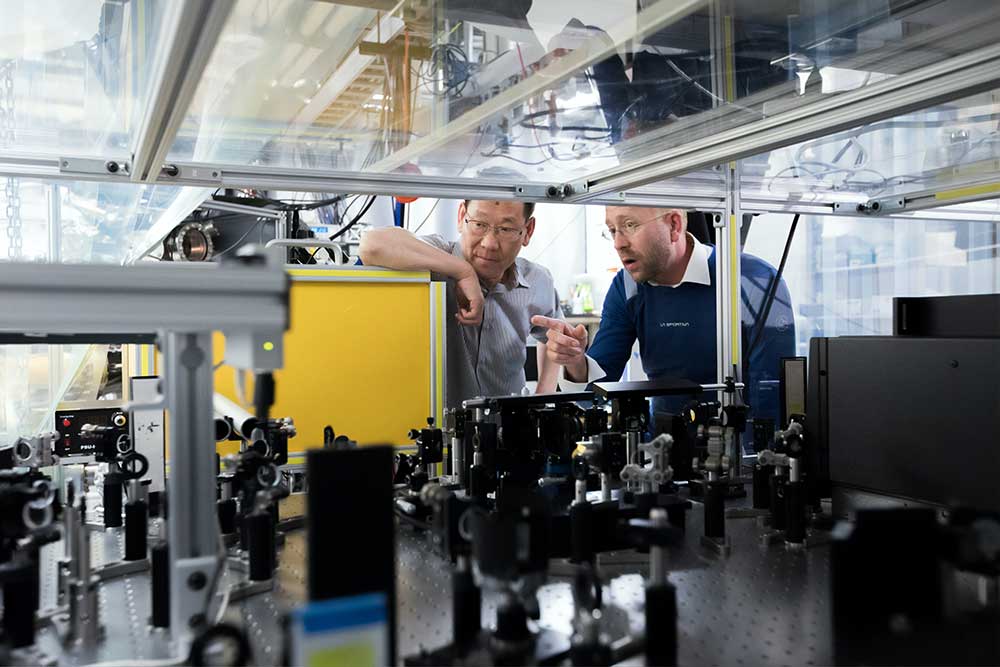As manufacturing shifts, associates must be trained to meet the demands of what is now one of the most tech-savvy jobs on the market.

Manufacturers are expected to hold more tech-focused roles, like converting customer orders into 3-D blueprints used to program machines.
By Andy Nicholas, VP, Americas, at WorkJam
Four years ago, Klaus Schwab, founder of the World Economic Forum, argued that we are in the middle of the fourth industrial revolution. While the first industrial revolution was powered by coal and steam, the second by electricity and the automobile, and the third by computing, the fourth is powered by even more advanced modes of technology: automation, the mobile internet, and artificial intelligence (AI).
Since Schwab’s presentation, the revolution has gained speed. Workers in manufacturing need more advanced skills than ever before. From using automated tools to find patterns in data to converting customer orders into 3D blueprints used to program machines, frontline manufacturers are doing jobs that require an often specialized knowledge base.
A strategy for continually training and upskilling employees is now essential for achieving meaningful growth. In addition to reducing costs related to hiring new employees, training and development improves employee engagement and reduces turnover. Additionally, it’s often faster and easier to upskill a current employee than it is to hire a skilled candidate: There are currently 1 million more job openings than there are workers to fill them, and 75% of HR professionals see a shortage of skilled candidates for open positions.
Across sectors, manufacturers are prioritizing training as a business imperative. In the era of automation, AI and other advanced technologies, your operation needs modern training programs designed to upskill workers and prepare them to succeed in their rapidly evolving roles.
For many manufacturers, training programs are available in one of two places: (1) the shared computer in a breakroom or (2) an offsite training program. Unfortunately, this turns training into a limited resource — your employees either have to wait their turn to use the computer or schedule their life around a training course.
These limitations also strain your ability to maintain seamless and efficient operations. From getting coverage for the employee’s missed time at work to paying for transportation, outside training courses can have a high cost. And when the break room computer is the only source of training materials, upskilling can take an extended period of time as employees slowly wind their way through the training module.
The secret to modernizing the upskill process is a digital workplace. A digital workplace turns training into an unlimited resource, done at the employee’s convenience. Going digital also makes tracking and compliance issues a thing of the past—you can automatically capture the time employees spend on upskilling, pay them for their time, and maintain constant visibility to the progress of individual employees.
Upskilling can keep your company competitive. With access to additional training and an expanded skill set, workers can take on more hours—giving them an additional financial incentive to upskill.
Here’s how to make upskilling in a digital environment work for your operation and your workers:
Given the importance of AI, automation, and the mobile internet, modern employee training techniques are vital for remaining competitive in manufacturing. Without the flexibility of digital training tools, it will become increasingly difficult to attract, train or retain skilled employees—both now and for the foreseeable future.

Andy Nicholas
Andy Nicholas is the VP of Americas for WorkJam. With over 20 years of experience at IBM, hybris (acquired by SAP) and Sterling Commerce, Andy brings a wealth of knowledge and expertise in product management, sales and commerce strategy. As a versatile leader with an established track record of breaking into new markets and territories, Andy focuses on establishing thought leadership and expert teams.
https://www.linkedin.com/in/andreasnicholas
In this episode, I sat down with Beejan Giga, Director | Partner and Caleb Emerson, Senior Results Manager at Carpedia International. We discussed the insights behind their recent Industry Today article, “Thinking Three Moves Ahead” and together we explored how manufacturers can plan more strategically, align with their suppliers, and build the operational discipline needed to support intentional, sustainable growth. It was a conversation packed with practical perspectives on navigating a fast-changing industry landscape.